Do Push Ups Work Forearms: Yes and No
Though push-ups are widely known to hit the chest and triceps, there is some credence to the question of whether they also include the forearms in their muscular recruitment pattern.
While it is true that the various muscles of the forearms play some small part in push-up mechanics, it is not quite in the manner that one may expect - and, unfortunately, not likely to result in any meaningful muscle growth.
Without going into specifics, the forearms are only worked during conventional push-ups in a stabilizing capacity.
This equates to a very low potential for any sort of hypertrophy occurring, and, for most purposes, it can be said that the forearms are not worked by push-ups to any significant extent. Recruitment does indeed take place, but it is not in a way that results in muscular development.
What is a Push-Up?
Push-ups are a traditionally body weight exercise involving the movement of multiple joints and the contraction of numerous muscle groups, making it a compound exercise.
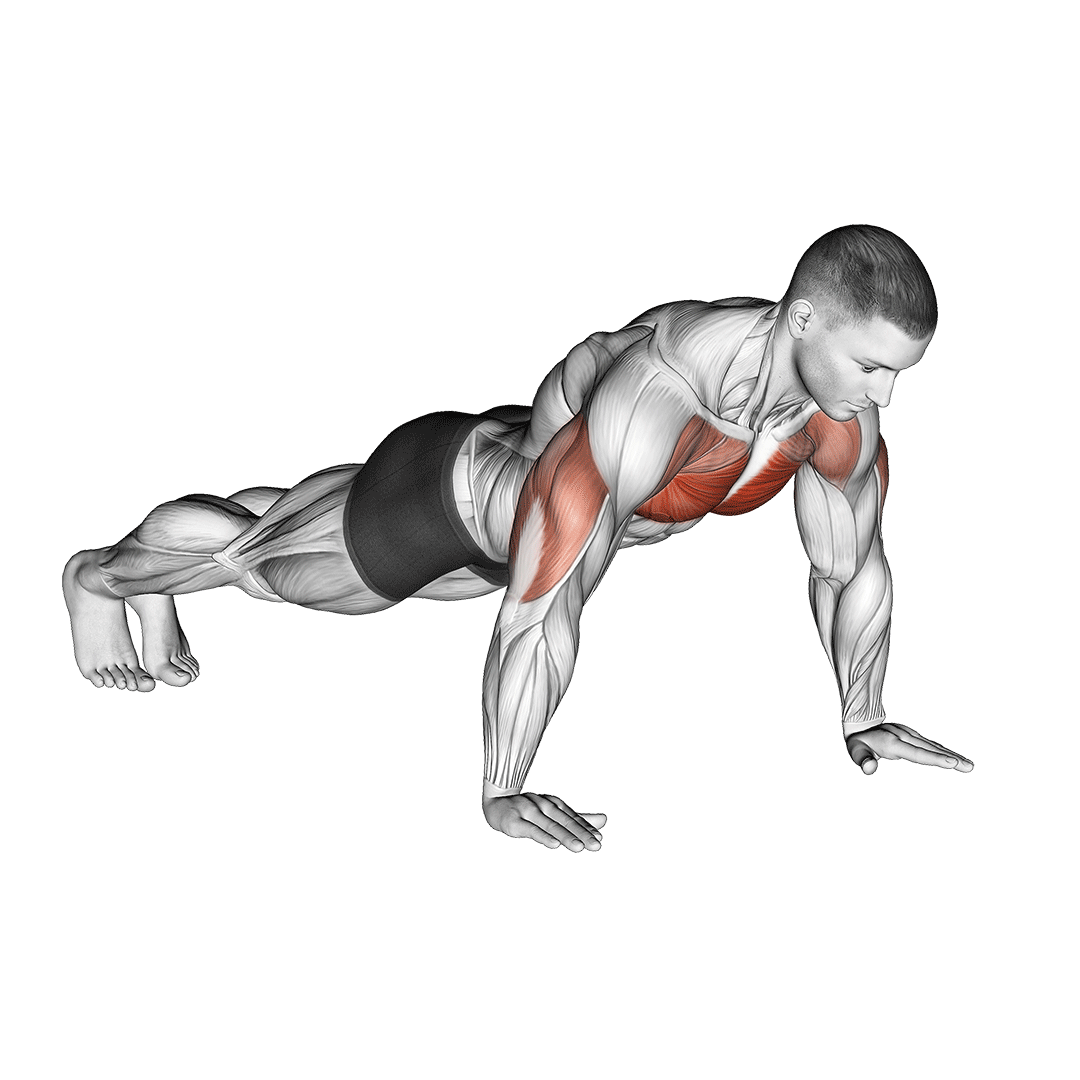
In terms of usage, push-ups are most often performed so as to build size and strength in the muscles of the chest and arms - though they also hold a place as a conditioning tool in many athletic training programs.
What are the Benefits of Push-Ups?
Apart from building size and strength in the upper body, push-ups are also excellent as a warm-up or technique tool to heavier movements like the bench press and weighted dip.
Furthermore, push-ups can be used to improve muscular endurance, reinforce the joints of the arms and to create athletic carryover in a workout.
What Muscles are Worked by Push-Ups?
Push-ups will dynamically target the muscles of the pectorals, the triceps brachii, the anterior head of the deltoids and the serratus anterior.
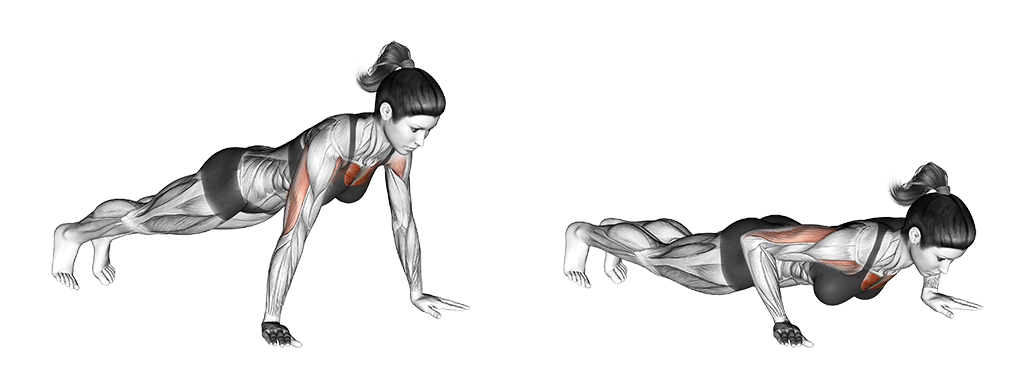
In an isometric capacity, the push-up will also work the core, the medial head of the deltoids and the forearms.
How to do a Push-Up
To perform a repetition of the push-up, the exerciser will lie on their hands and feet in a plank position, hands set parallel to the shoulders but shoulder-width apart in distance. The core should remain contracted and the back relatively flat when viewed from the side.
From this position, the exerciser will bend at the elbows, lowering their torso until the chest is within several inches of touching the ground.
Pausing for a moment, they will then continue by pushing through the palms and extending the elbows once again, completing the repetition.
Function of the Forearms During Push-Ups
The forearms contain numerous muscles that enable it to move the fingers, bend and rotate the wrists as well as help stabilize any movement involving the arms.
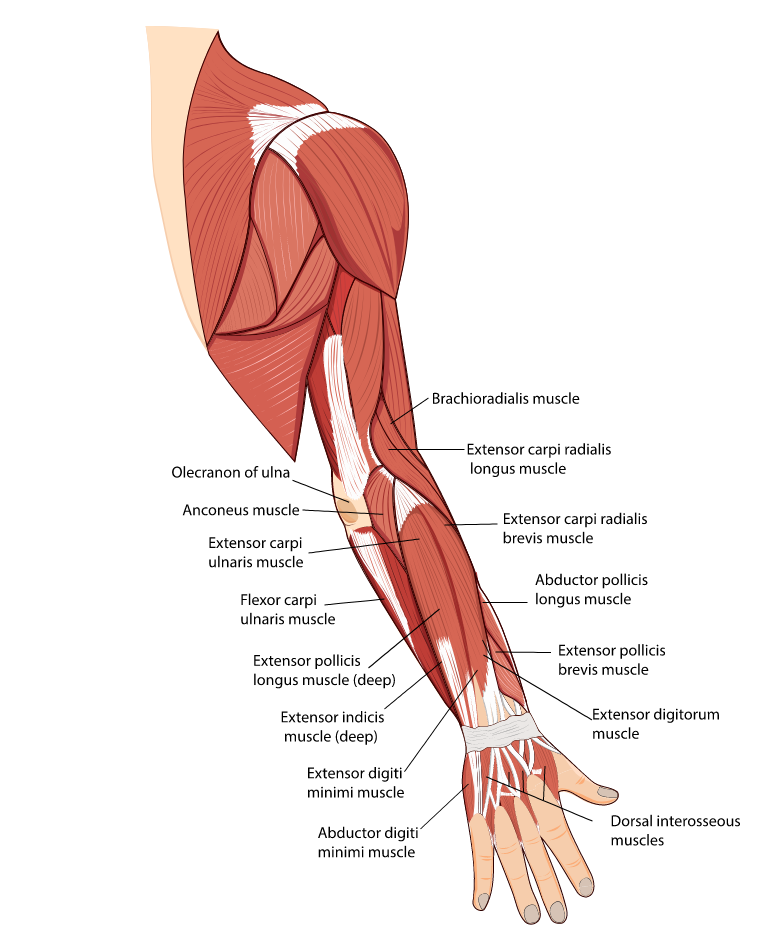
Despite this wide variety of muscles, the forearms are in fact not directly responsible for any sort of dynamic movement during the exercise, and are instead only worked in a stabilizing or isometric capacity.
So - if the question is whether push-ups work the muscles of the forearms, the answer is technically yes, but not for the purposes of muscular development.
What is Isometric Contraction?
Isometric contraction of skeletal muscles is simply a form of recruitment where the muscle does not lengthen or shorten in any significant capacity, but instead produces tension in such a way that nearby joints and muscles are stabilized despite resistance being placed therein.
One good example of this is the muscles of the core during a plank.
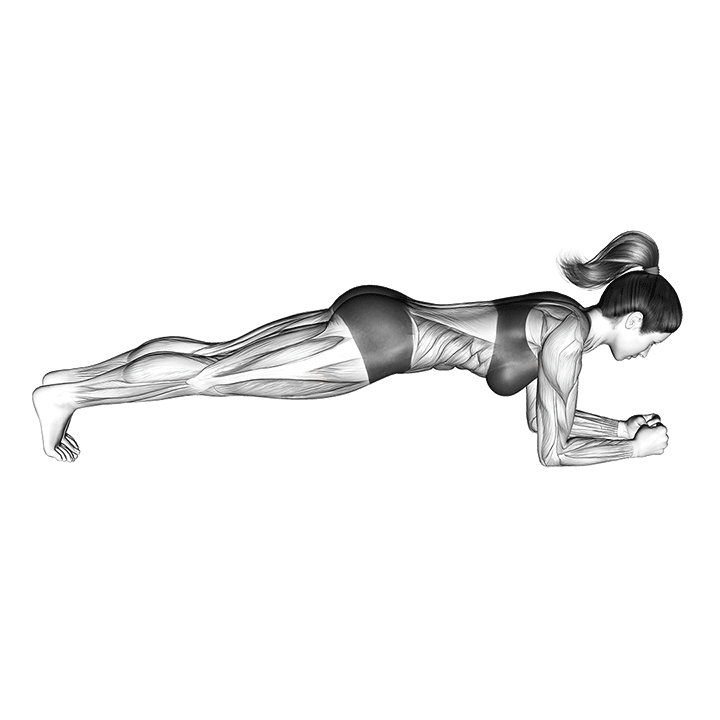
The abdominal muscles do not visibly move, yet the exerciser will feel their muscles contracting and working to keep their body rigid as they perform the movement.
Though isometric contraction is nonetheless still muscular contraction, it is not likely to result in the development of bigger muscles (hypertrophy) and is largely inefficient in terms of building dynamic muscular strength.
Instead, isometric contraction improves a muscle’s capacity to contract isometrically - meaning that said muscle group will be better at acting as a stabilizer in the future.
How to Maximize Isometric Contraction of the Forearms During Push-Ups
For the most part, there is no direct way to increase the contraction seen in the forearms while a push-up is being executed.
However, one possible route is to instead switch out the conventional push-ups with an alternative that is more intensive in terms of forearm muscle recruitment.
Push-up variations that involve a less stable platform like fingertip push-ups or BOSU ball push-ups will both force the muscles of the forearms to isometrically tense to a far greater degree, resulting in the forearms developing more efficiently.
So - Should You Do Push-Ups for the Forearms?
Should conventional push-ups be done to train the forearms? Not quite.
However, by altering the push-up in a way that demands greater contraction of the forearms, it becomes indeed possible to strengthen the muscles therein, and in quite a significant capacity as well.
The extent to which the forearms are trained by these possible variations will depend on their instability, with exercises performed on a highly unstable surface requiring larger adjustments by the muscles of the forearms and therefore leading to greater adaptation.
At this point, it can become a balancing act of training the forearms while simultaneously preserving the original muscular recruitment pattern of the push-up.
One should strive to find a variation that challenges the forearms but is not difficult enough to interrupt training of the triceps, shoulders and pectoral muscles.
Alternatives to the Push-Up For Forearm Training
For a few suggestions on possible forearm-focused push-up variations, read on:
1. Fingertip Push-Ups
A classic among martial artists who wish to condition their wrists and hands, fingertip push-ups are a highly advanced push-up variation known to work the forearms and other stabilizer groups to a high intensity.

While fingertip push-ups will nonetheless still work the forearms in an isometric capacity, the sheer intensity of the stabilization needed will greatly surpass the needs of a conventional push-up, leading to better strength and stability.
Note that the fingertip push-up is a highly advanced movement, and may be dangerous to perform for less experienced bodyweight athletes.
2. Knuckle Push-Ups
Another classic hand-conditioning exercise favored by martial artists, knuckle push-ups may be seen as a less intense version of fingertip push-ups, where much of the isometric contraction is just as intense but the structural durability of the hands are not endangered.
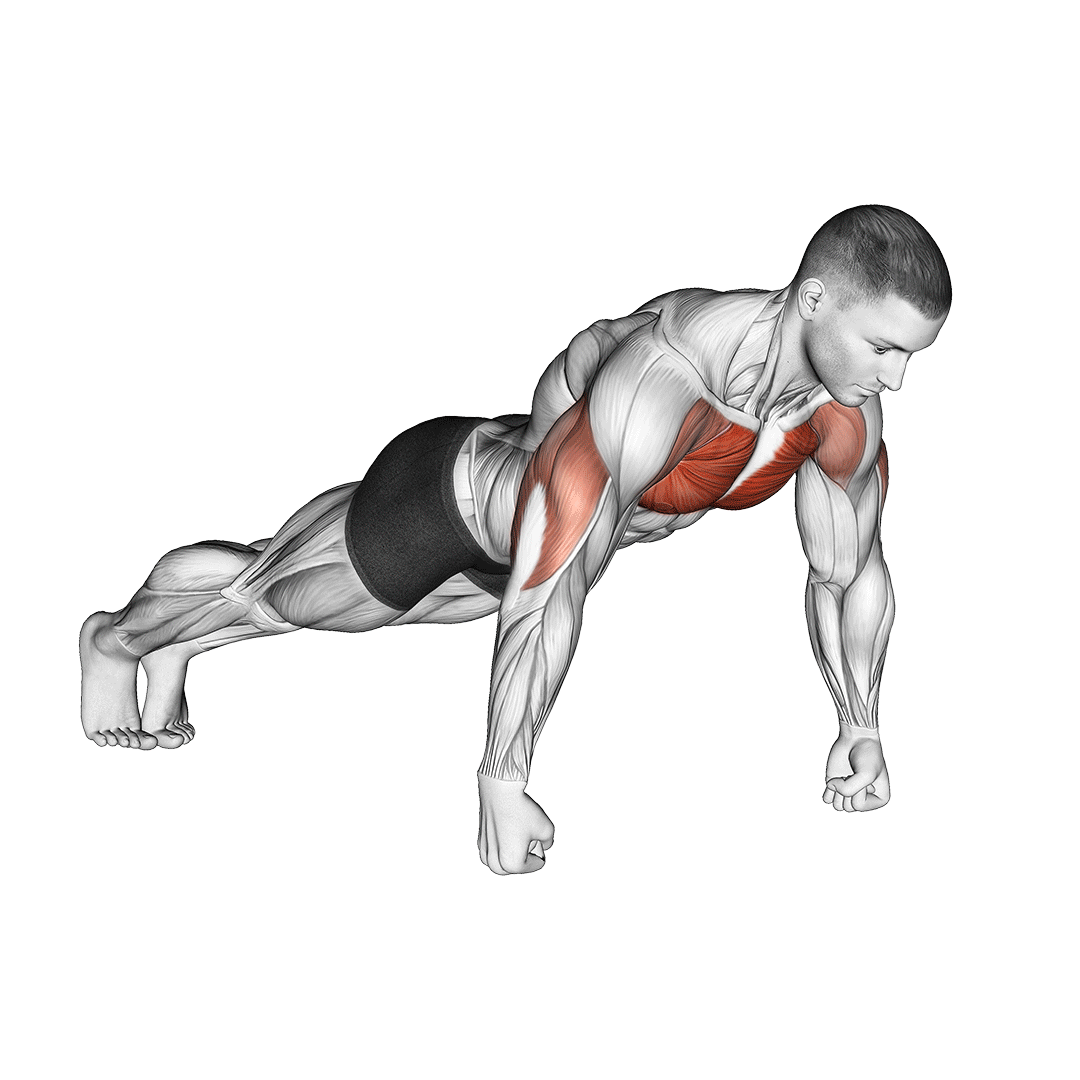
Knuckle push-ups are mechanically identical to conventional push-ups, only with the hands shaped into fists with the knuckles facing downwards, rather than having the palms flat against the ground.
When performing knuckle push-ups, it is best to ensure that the wrists are kept completely straight so as to avoid injuring them, as well as to ensure that the muscles of the forearms are contracting to their fullest extent.
3. BOSU Ball Push-Ups
For exercisers that find knuckle and fingertip push-ups to be uncomfortable, it is entirely possible to instead perform a conventional push-up with the hands atop a BOSU ball.
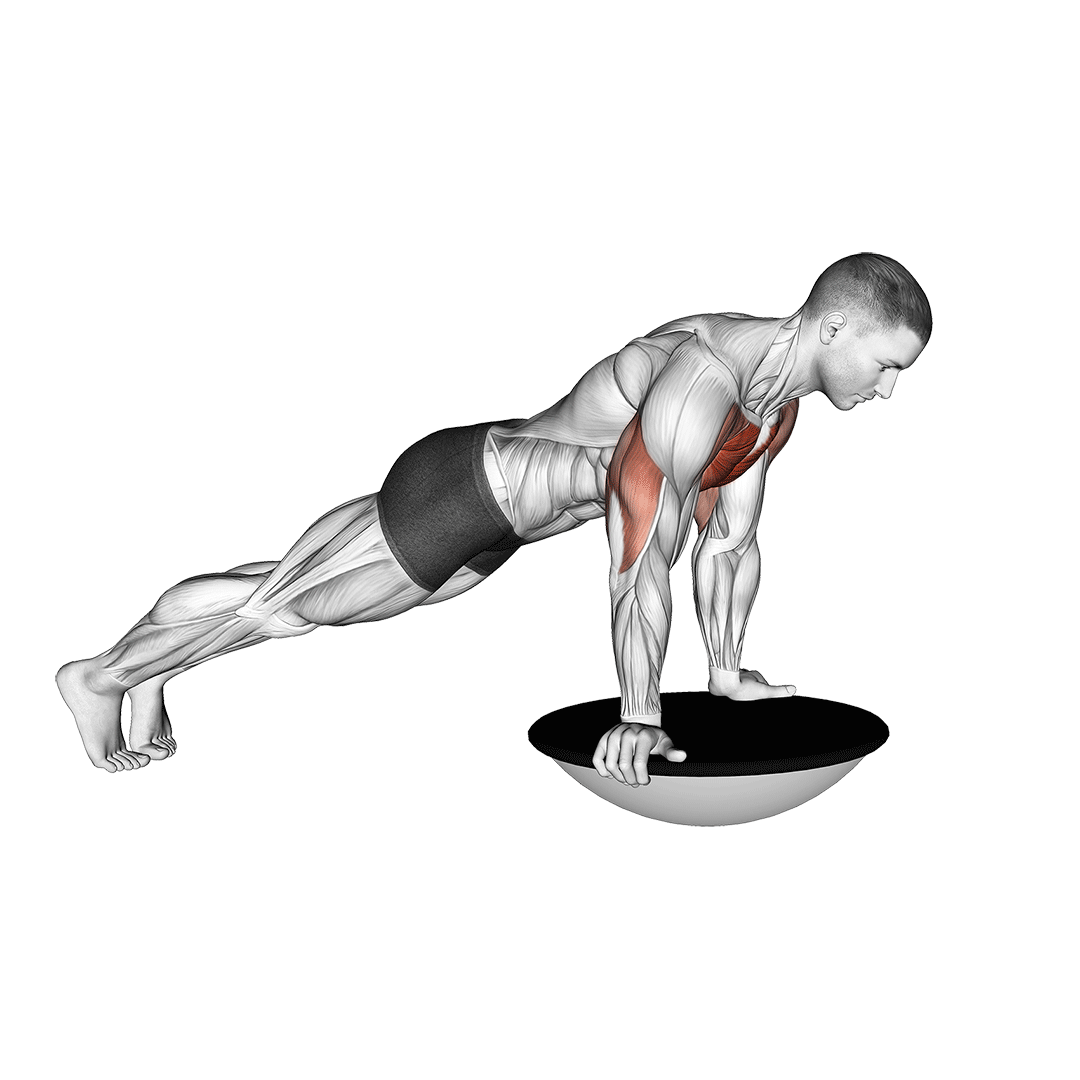
BOSU balls are half-sphere shaped training equipment used to increase the stability requirements of an exercise. In the case of push-ups, this means greater isometric contraction of the core, deltoids and forearms as the body attempts to keep itself rigid throughout the exercise.
Keep in mind that the forearm-focused BOSU ball push-up is different from the core-focused variation, as the latter one involves placing the feet atop the ball, rather than the hands.
4. TRX Suspension Push-Ups
TRX push-ups are an exercise somewhere between a ring dip and a conventional push-up, as they place the hands of the exerciser in the handles of a TRX band, requiring them to suspend themselves in a way that demands highly intense isometric contraction from the deltoids and forearms.
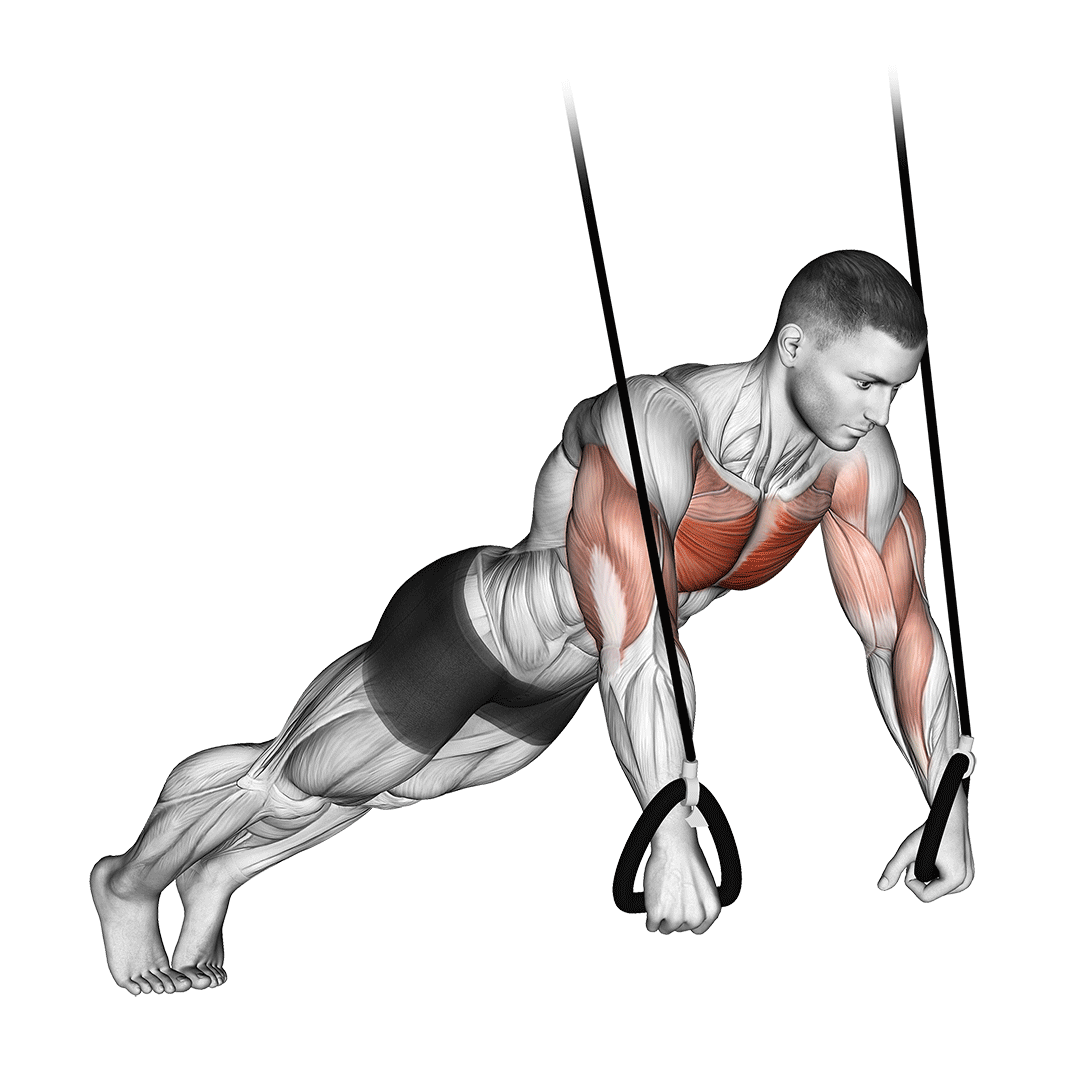
Though the feet are placed solidly on the ground, it is the arms that will be used for the majority of the stability seen in the upper body, resulting in greater adaptation in the muscles therein.
Frequently Asked Questions (FAQ)
What Push-Ups are Best for Forearms?
There are quite a number of push-up variations that can target the forearms, the most effective of which being the knuckle push-up and fingertip push-up. Both exercises will work the forearms to a highly intense manner, and can strengthen the connective tissues of the wrists and hands as a bonus.
How can I Make my Forearms Bigger?
Forearms can be grown in much the same way as any other skeletal muscle; targeted and dynamic resistance training. With the correct training stimulus, the muscles of the forearms will undergo hypertrophy and thereby become larger in size.
A few classic forearm exercises are the reverse barbell curl, farmer’s carries and dumbbell hammer curls - all of which target the largest muscles located in the forearms, and can contribute to making your forearms bigger.
Why do my Forearms Hurt After Push-Ups?
Experiencing forearm pain after a set of conventional push-ups is a sign of poor form adherence.
In particular, forearm or wrist pain can stem from the elbows caving inwards during the end of the push-up, if the elbows are flaring outwards excessively, or if the wrists are set too close together beneath the body.
To prevent forearm pain from push-ups in the future, it is important to perform the exercise with correct form, and to allow the body to recover from the rigors of training before doing the same workout again.
Final Thoughts
Now that we’ve established whether push-ups train the forearms or not (only technically!) - it is up to the exerciser to decide on whether they will perform a more forearm-focused push-up variation, or retain the conventional push-up and instead perform additional forearm isolation work.
Regardless of which option they take, it is important to account for other exercises in the workout that may also be training the forearms, and to ensure that all movements are performed with correct form.
References
1. Calatayud J, Borreani S, Colado JC, Martín FF, Rogers ME, Behm DG, Andersen LL. Muscle Activation during Push-Ups with Different Suspension Training Systems. J Sports Sci Med. 2014 Sep 1;13(3):502-10. PMID: 25177174; PMCID: PMC4126284.
2. Borreani S, Calatayud J, Colado JC, Moya-Nájera D, Triplett NT, Martin F. Muscle activation during push-ups performed under stable and unstable conditions. J Exerc Sci Fit. 2015 Dec;13(2):94-98. doi: 10.1016/j.jesf.2015.07.002. Epub 2015 Sep 2. PMID: 29541105; PMCID: PMC5812863.
